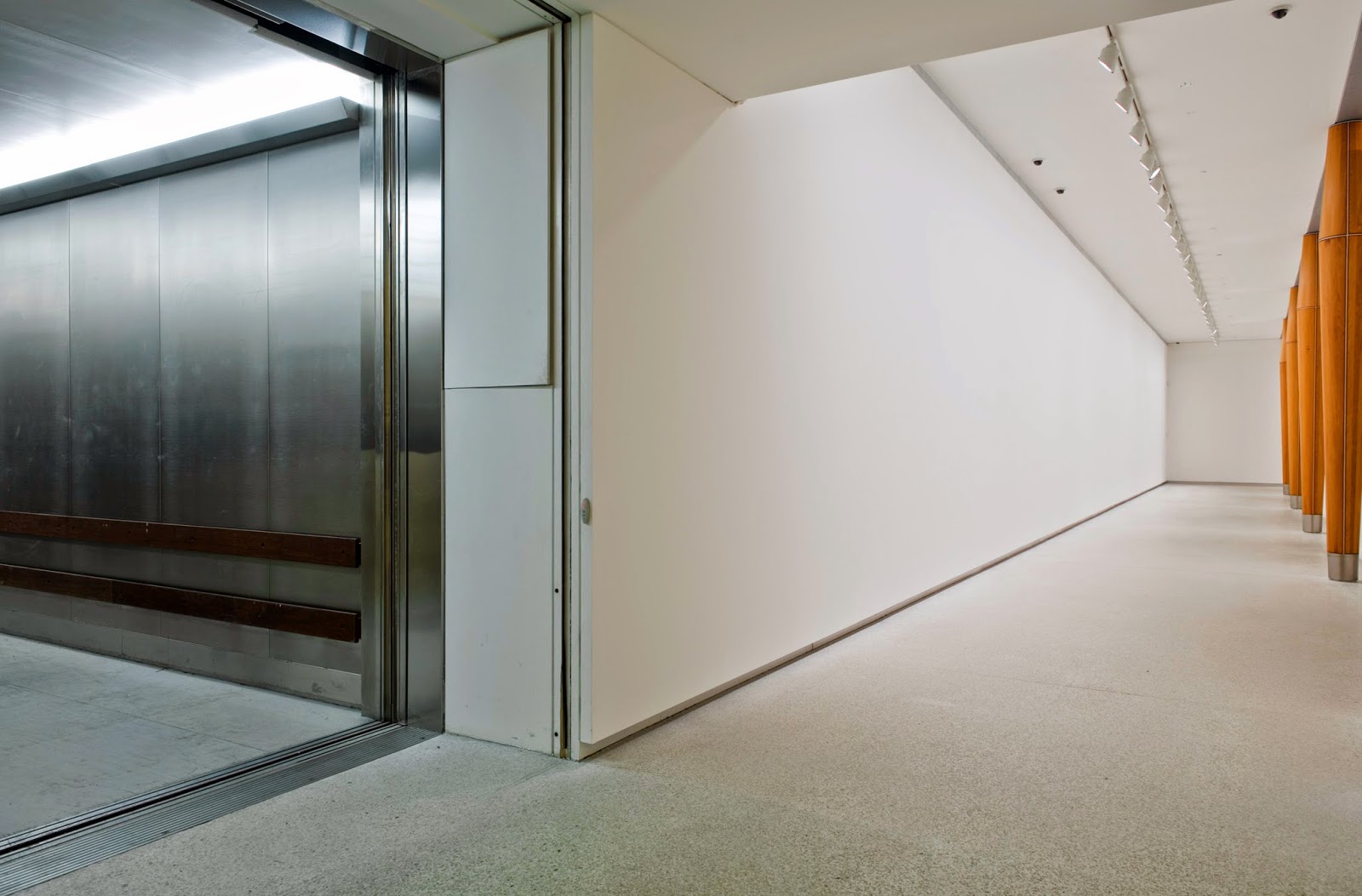Tuesday 12 August 2014
Zara Stanhope
This Walters Prize engages with the public in notable ways. A number of the artists’ projects originally took place in public, outdoors and beyond gallery walls. Additionally, some involved members of the public and were not created for gallery audiences to view in the conventional sense.
In what ways might we consider that these projects engaged with communities or with ideas of community?

Simon Denny, All You Need is Data: The DLD 2012 Conference REDUX (installation view), 2014
Simon Denny’s exhibition All You Need Is Data – The DLD 2012 Conference REDUX literally represents the ideas and aesthetics of a talkfest undertaken by international leading-edge technology thinkers. Denny quotes from the presentations of each of the conference’s participants – politicians, corporate luminaries, scientists and leaders from varied professions, including curator Hans Ulrich Obrist. Set out as a labyrinth of signage in the gallery space, All You Need Is Data re-presents 89 talks from the three-day synthesis of thinking. Denny’s work suggests that the idea of a ‘public sphere’ has been overtaken by dialogue between a select group of society. Nevertheless, evidence of this high-level platform for discussion suggests the possibility for a public or community based around ongoing and unresolved dialogue and debate, as upheld by philosophers Chantal Mouffe and Jean Luc-Nancy. In this way, Denny’s project speaks to such intellectual understandings of our social existence.

Luke Willis Thompson, inthisholeonthisislandwhereiam (installation view), 2014
In contrast, by inviting audiences of the 2014 Walters Prize to take a taxi ride Luke Willis Thompson’s inthisholeonthisislandwhereiam confronts the viewer with the question ‘Who is your community?’ The nexus of suburban location and house with its evidence of lived experience stands in stark contrast to the Auckland Art Gallery where the viewer begins and ends their journey. Departing from the architecturally award-winning Auckland Art Gallery, Thompson’s restagedinthisholeonthisislandwhereiam plays out across a set of conflicting social values and cultural existences related to public and private spaces. If community is an interrelation of commonalities – family ties, friendships, shared interests, cultural background, histories etc – inthisholeonthisislandwhereiam reminds the viewer of the exclusive boundaries of community membership.

Maddie Leach, If you find the good oil let us know (installation view), 2012–2014
The individuals who were part of Maddie Leach’s If you find the good oil let us know could be understood to form a temporary community existing for the duration of the project. Leach’s artist’s book and website of the same name reveal traces of individuals who took part in her original art project beginning in 2012. Scientists, technicians, sign writers, photographers, newspaper editors, and letter writers to the local Taranaki newspaper, amongst others, played a part in Leach’s investigation of the composition of a barrel of ‘whale oil’. These diverse individuals were connected via the persuasive skills of the artist and the poetic spirit of her project. This commonality, amongst other communities that pre-exist for these individuals, lives on in the extension of Leach’s project for Auckland Art Gallery’s Walters Prize exhibition.

Kalisolaite ’Uhila, Mo’ui tukuhausia (installation view), 2014
Finally, Kalisolaite ’Uhila’s Mo’ui tukuhausia, an action of living in and around the Gallery 24 hours a day, potentially engages with as well as represents local identities. ’Uhila’s project, as I understand it, questions the very nature of community. Living in and outside the Gallery for the three months of the Walters Prize exhibition, ’Uhila is a being-in-common with the group of local rough sleepers. While raising awareness of homelessness by its enactment, there is more going on in this project than an identification between ’Uhila and his co-inhabitants.
’Uhila’s project troubles stereotypes of community and belonging. On one hand, ’Uhila is an aberrant figure amongst the typical gallery demographic, a Tongan man and a potential breadwinner who is not living the urban dream. For this reason, his presence raises the question for each of us, not least myself and other Gallery staff, as to how we offer him the hospitality that means we share something in common?
These artworks ask audiences to engage with the question of how we generate our individual and formal communities, and how a public is formed at a personal and local level. Dynamic, open-ended and generative of debate, the projects in the 2014 Walters Prize open conversations about ways we live, and could live, together.
Image credits:
Simon Denny
All You Need is Data – The DLD 2012 Conference REDUX (installation view), 2014, from the Walters Prize 2014 exhibition at Auckland Art Gallery Toi o Tāmaki, Photo: Jennifer French
Luke Willis Thompson
inthisholeonthisislandwhereiam (installation view), 2014, from the Walters Prize 2014 exhibition at Auckland Art Gallery Toi o Tāmaki, 12 July – 12 October 2014. Photo: Jennifer French
Maddie Leach
If you find the good oil let us know (installation view), 2012–14, from the Walters Prize 2014 exhibition at Auckland Art Gallery Toi o Tāmaki. Photo: Jennifer French
Kalisolaite ’Uhila
Mo'ui tukuhausia (installation view), 2014, from the Walters Prize 2014 exhibition at Auckland Art Gallery Toi o Tāmaki, 12 July – 12 October 2014. Photo: John McIver